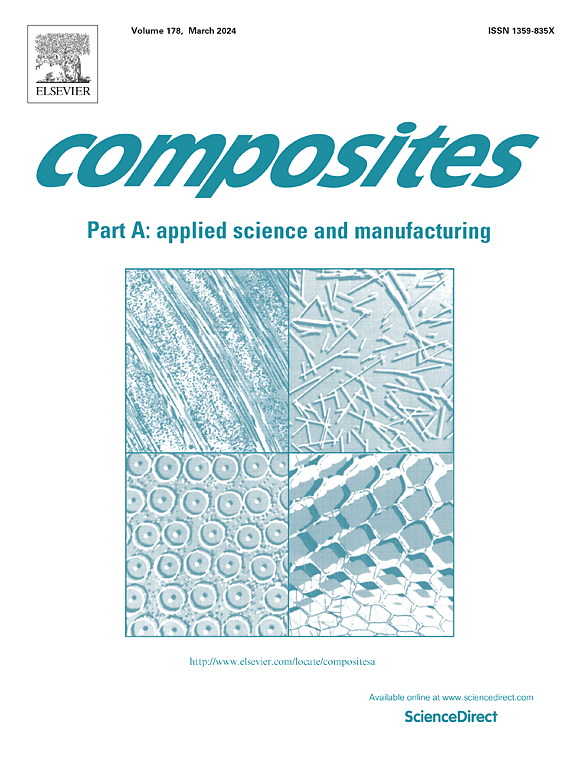Titanium dioxide whiskers functionalized with organic–inorganic hybrid silica coatings for multifaceted enhancement of high-performance polybutylene terephthalate nanocomposites
IF 8.1
2区 材料科学
Q1 ENGINEERING, MANUFACTURING
Composites Part A: Applied Science and Manufacturing
Pub Date : 2025-04-14
DOI:10.1016/j.compositesa.2025.108952
引用次数: 0
Abstract
Plastics with all-good stiffness, strength, and toughness properties can hardly been achieved through a whisker-filling method, even after the functionalization on whiskers. The titanium dioxide whiskers, with limited studies focusing on their effect to the tribology and antistatic properties of the composites, require more investigation on their reinforcing effects to the functional engineering plastics. In this work, rutile titanium dioxide whiskers coated by organic–inorganic hybrid silica (CRTs) were prepared through a co-hydrolysis and co-condensation method. CRT and uncoated whiskers (RT) were melt-blended with polybutylene terephthalate (PBT) to prepare nanocomposites, with various properties studied. The tensile/flexural strength and modulus, impact strength, dielectric constant, heat deformation temperature and thermal conductivity of PBT nanocomposites filled with 50% RT improved by 59%/45%, 376%/375%, 19%, 108%, 170%, 114%, respectively. More interestingly, these properties improved further with 50 wt% CRT added, accurately by 71%/67%, 342%/416%, 22%, 104%, 174%, 137%. The reinforcing mechanisms by RT and CRT were investigated. The neat PBT showed a brittle fracture behavior, while the RT(CRT)/PBT composites exhibited ductile fracture with polymer fibrils, whisker pulling out and whisker breaking. CRT enhanced the mechanical properties, and meanwhile reduced the dielectric loss and apparent viscosity for PBT, which was due to the improved interfacial compatibility deriving from the functional coating.
求助全文
约1分钟内获得全文
求助全文
来源期刊

Composites Part A: Applied Science and Manufacturing
工程技术-材料科学:复合
CiteScore
15.20
自引率
5.70%
发文量
492
审稿时长
30 days
期刊介绍:
Composites Part A: Applied Science and Manufacturing is a comprehensive journal that publishes original research papers, review articles, case studies, short communications, and letters covering various aspects of composite materials science and technology. This includes fibrous and particulate reinforcements in polymeric, metallic, and ceramic matrices, as well as 'natural' composites like wood and biological materials. The journal addresses topics such as properties, design, and manufacture of reinforcing fibers and particles, novel architectures and concepts, multifunctional composites, advancements in fabrication and processing, manufacturing science, process modeling, experimental mechanics, microstructural characterization, interfaces, prediction and measurement of mechanical, physical, and chemical behavior, and performance in service. Additionally, articles on economic and commercial aspects, design, and case studies are welcomed. All submissions undergo rigorous peer review to ensure they contribute significantly and innovatively, maintaining high standards for content and presentation. The editorial team aims to expedite the review process for prompt publication.
 求助内容:
求助内容: 应助结果提醒方式:
应助结果提醒方式:


